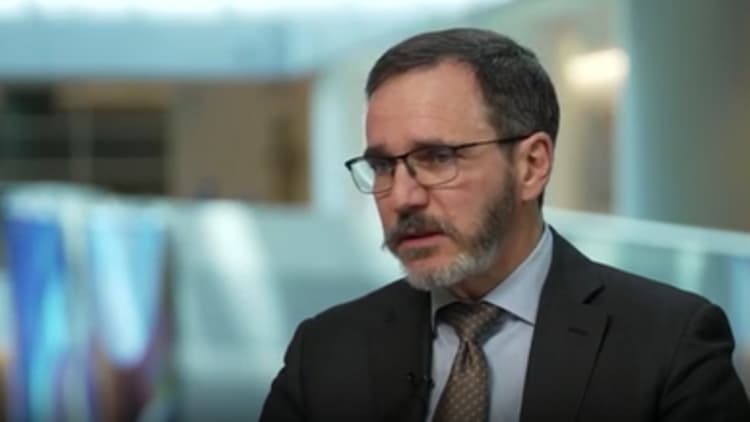Farmers who grow fresh fruits and vegetables often find crop insurance prohibitively expensive – or even unavailable – as climate change increases the likelihood of droughts and floods that can lead to crop losses.
Their predicament has led some small farmers to question their future on the land.
Efforts to increase the availability and affordability of crop insurance are being discussed in Congress as part of the next farm bill, but divisions between the interests of large and small farmers are emerging in the debate.
The threat to farms from climate change is not hypothetical. A 2021 study by Stanford University researchers found that rising temperatures were responsible for 19 percent of $27 billion in crop insurance payments from 1991 to 2017 and concluded that additional warming increases the likelihood of future crop losses significantly increased.
About 85 percent of the nation’s crops — including row crops like corn, soybeans and wheat — are insured, according to the National Sustainable Agriculture Coalition, a nonprofit that advocates for environmentally friendly food production.
In contrast, in 2022, barely half of the area used for specialty crops — supermarket staples like strawberries, apples, asparagus and peaches — was insured, federal statistics show.
Among those without insurance is Bernie Smiarowski, who grows potatoes on 700 acres in western Massachusetts and grows strawberries on 12 acres. Its soil is considered one of the most fertile in the country. The trade-off is proximity to the Connecticut River, a deal that is becoming increasingly difficult as a warming world increases the likelihood of flooding.
Mr. Smiarowski lost nearly $1.25 million worth of potatoes to flooding last year when heavy rains hit the area and water from the river entered his fields. It was the third year in a row with challenging weather.
“We’ve had two extremely wet years sandwiched by one of the driest years I’ve ever seen,” he said. “We can’t last another year like last year.”
Even in an ordinary year, his spending of $2,000 per acre produces returns ranging from a 20 percent profit to breaking even. Mr. Smiarowski said the cheapest plans he was offered – about $170 per hectare per year – would represent a significant outlay but would only cover 60 percent of the wholesale price of potatoes.
He thinks insurance makes sense, but is just hoping for the best for now.
And specialty farmers say few agents will work with them. “I only know of one in the state,” said Mike Koeppl, who grows strawberries on seven acres near Oshkosh, Wisconsin.
Their reluctance is of a financial nature, experts say. Agents make more money insuring huge tracts of corn and soybeans. According to the U.S. Department of Agriculture, the average American farm is 445 acres, but the average specialty farm is significantly smaller.
And most insurance plans cover a single crop, meaning specialty farmers who grow different fruits and vegetables must purchase multiple policies.
Companies that offer crop insurance emphasize that their plans must provide payouts that approximate the insurance premiums collected.
Kristen Ward, regional vice president of crop insurance at Farm Credit Mid-America, said her company works with farmers in six states, covering crops from barley to grapes, but that it is not possible in places where the conditions for specialization are not available Fruits and vegetables are beneficial.
The premiums offered to farmers are based on risk “assessed according to where the crop is grown,” she said. “It may look different in other parts of the country.”
Products have emerged to fill such gaps, including Total Farm Income Protection, a comprehensive insurance policy for multi-crop farms.
According to the American Farm Bureau Federation, a trade group, more than 220,000 American farms grow specialty crops. But federal statistics show that only 18,659 whole farm revenue plans were sold in the decade they were offered.
Advocates for small specialty farmers are looking to Washington for relief.
The federal crop insurance program was created during the Great Depression, when the Dust Bowl devastated the agricultural belt. Under the $18 billion program, the government pays half of a farmer’s crop insurance premium to ensure a secure food supply.
In December, Congress extended the current farm law through 2024, but lawmakers couldn’t agree on next steps.
The National Sustainable Agriculture Coalition recently released a series of recommendations, including facilitating access to insurance for total farm income and expanding disaster assistance.
“Floods, droughts and hurricanes are becoming more frequent and more severe,” said Billy Hackett, a coalition policy specialist. “That’s why it’s important to have a safety net.”
Sen. Debbie Stabenow, a Democrat from Michigan, has proposed language in the farm bill that would give specialty farmers access to heavily subsidized insurance policies and streamline the application process for products such as total farm income coverage. “I will always fight for specialty crops to become a central part of agricultural policy,” Ms. Stabenow said in a statement.
A standalone bill, whose co-sponsors include Sen. Cory Booker, Democrat of New Jersey, provides incentives for insurance agents to work with small and specialty growers. The bill bases subsidies on the complexity of an insurance plan, not the size of the premium.
But commodity farmers are skeptical about changes to the crop insurance program.
Farmers who grow corn, soybeans and wheat worry about “broadly changing the way the program works in a way that sets everyone back rather than helping to fill the gaps that exist in certain crops.” said Danny Munch, an economist with the American Farm Bureau Federation.
Some lawmakers oppose changes based on these concerns.
“For years, Iowa farmers have been calling on me to leave crop insurance out of the next farm bill,” Sen. Charles E. Grassley, Republican of Iowa — a state heavily dependent on crops like corn and soybeans — said in a statement . “There is no need to fiddle with something that isn’t broken.”
The impasse has led some farmers to seek other forms of support.
After Mr. Smiarowski’s Massachusetts crop was ruined last year, he and other flood-affected farmers appealed to Gov. Maura Healey for help, which came in the form of disaster relief. Mr. Smiarowski was grateful but said his share only covered about 20 percent of his losses.
The support was also only temporary, leaving him no choice but to wish for more favorable weather in the future.
“When times are bad, you get what you can and hope for a better year next year,” he said.
Source link
2024-03-27 09:00:52
www.nytimes.com














